Intel Arc A750 vs. AMD Radeon RX 6600: Which $250 GPU should you buy?

 Image: Brad Chacos/IDG
Image: Brad Chacos/IDGThe story of Intel’s Arc GPUs—such as the Arc A750—continues to evolve. One can almost imagine Intel engineers up by candlelight at late hours tuning their drivers. They’re up against competitive odds from established players such as AMD, so we’d expect no less.
How does the Intel Arc A750 fare against AMD’s Radeon RX 6600? The Radeon RX 6600 has been a great GPU for 1080p gamers, providing tremendous bang for buck. It’s also priced aggressively as it ages—prompting Intel to drop the Arc A750 to $249.
We’ll go over the price, gaming performance, and vital things to be aware of. Both GPUs focus on 1080p gamers who want to squeeze the absolute most out of their purchase. The big story here will be driver stability. Intel has an uphill battle against AMD’s more established (read: Stable) driver implementations over time. Should you take the risk and go Intel, or stick with tried-and-true AMD? Let’s find out!
Intel Arc A750 vs. AMD RX 6600: Price and availability

Microcenter GPU availability Feb 23 Intel vs. AMD.
Microcenter GPU availability Feb 23 Intel vs. AMD.
Thiago Trevisan
Microcenter GPU availability Feb 23 Intel vs. AMD.
Thiago Trevisan
Thiago Trevisan
Good news: Intel recently dropped the price of Arc A750 to $249. This is due to competitive pressure from AMD’s 6600 GPU, which has been priced at that range or lower. There’s also a general malaise in the GPU market, with significantly less sales than we’re used to seeing. (Sorry Intel, you missed the GPU craze by a year—where anything available was snapped up!)
Availability due to this new market atmosphere is great for both GPUs—you’ll be able to find them at their MSRP or even lower. The question then becomes if you should. Nvidia remains more expensive in general, with the RTX 3060 and 3050 still selling for more.
Intel Arc A750 Limited Edition
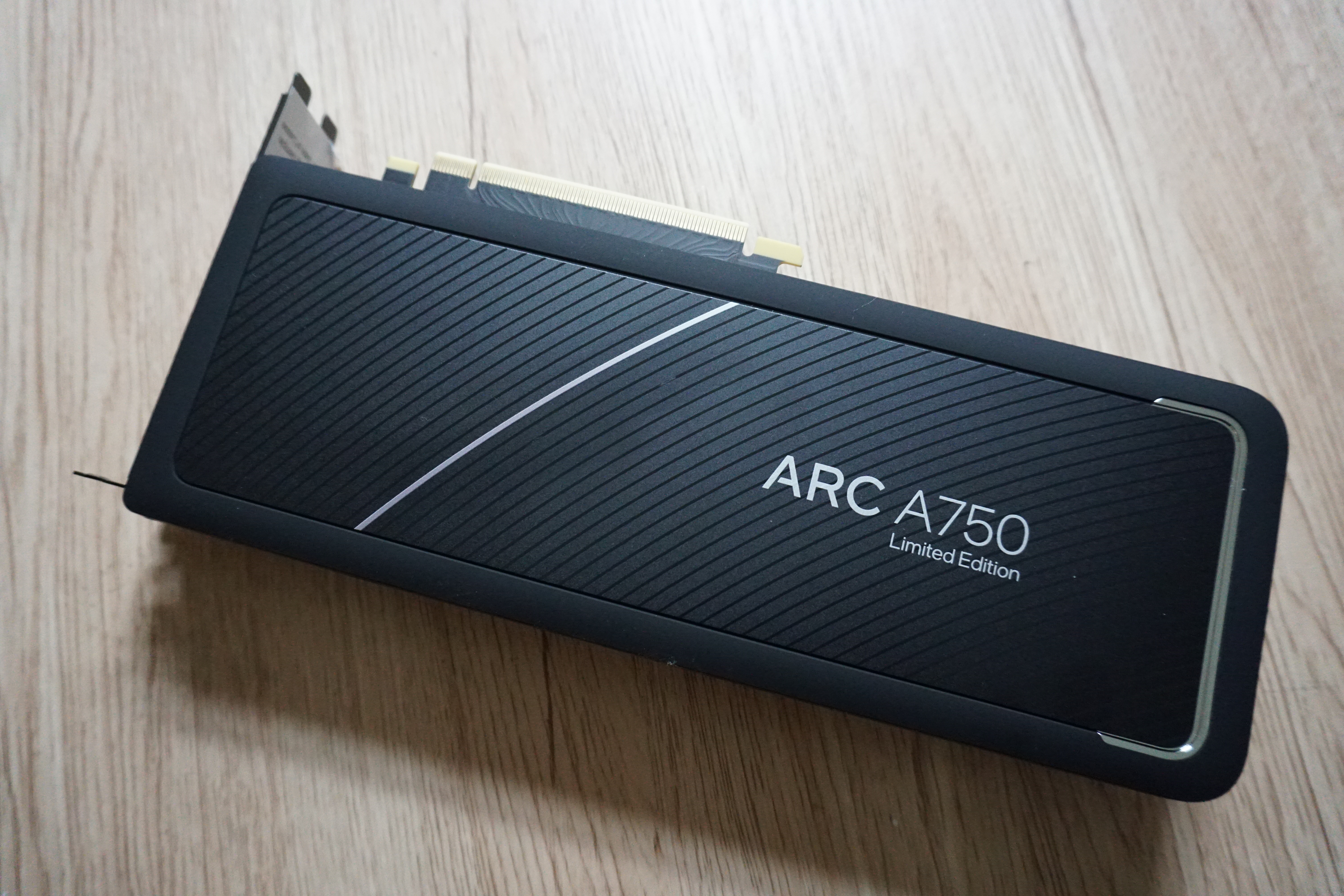 Read our reviewPrice When Reviewed:$249Best Prices Today:$249 at B&H Photo | $249 at Micro Center | $249 at Newegg
Read our reviewPrice When Reviewed:$249Best Prices Today:$249 at B&H Photo | $249 at Micro Center | $249 at Newegg
Even with a more relaxed GPU shopping experience, you’re much more likely to find the AMD 6600 across more vendors due to its greater spread on the market. Intel Arc A750, being more recent and not having the same vendor reach, will be available in more selective retailers.
A real-world search on Amazon provided some results for AMD’s RX 6600 for $249 and above, but no results for Intel Arc A750 at the time of search. Newegg proved to be a bit more successful, with the Intel Arc A750 found for $249. Further, it also had more AMD RX 6600 GPUs, and some well under $249.
Microcenter—another popular retailer for those lucky enough to live near one—has a significant number of well-priced AMD 6600 in stock. Some were as low as $219! By contrast, only four or five Intel Arc A750 were available, the lowest of which was $249.
This sample of large retailers is a good example of where most gamers will be searching for these products. It’s a huge win for AMD—you’d have to seek out the Intel GPU and be willing to pay more.
Intel Arc A750 vs. AMD RX 6600: Performance

Thiago Trevisan
Thiago Trevisan
Thiago Trevisan
Intel will have to provide a significant performance advantage to make up for its market position as illustrated in the price section, together with its driver stability.
The big story here will be the updates to Intel’s drivers, which will be “revealing” more performance and stability with time. For example, the recent update had a big boost for older DX9 games. If Intel wants to compete with the big players, they’ll need to do the same in triple AAA titles. (You’ll also want to check out the PCWorld Youtube channel, which has been posting Intel Arc updates.)

From PCWorld Intel Arc Review.
From PCWorld Intel Arc Review.
Brad Chacos
From PCWorld Intel Arc Review.
Brad Chacos
Brad Chacos
Starting with Cyberpunk 2077 (Ray tracing and DLSS/FSR off) the Intel Arc A750 does not do very well at 1080p – 50 FPS vs 64.3 FPS of the AMD 6600. This falls shorted of the magical 60 FPS number, not to mention the 6600 is cheaper on average. At 1440p, the results are much closer – but still a paltry 38 FPS. This shows that Intel GPUs seem to favor slightly higher resolutions vs 1080p, however. In the PCWorld Youtube Arc update for the A770, similar conclusions show it falling behind AMD and Nvidia.
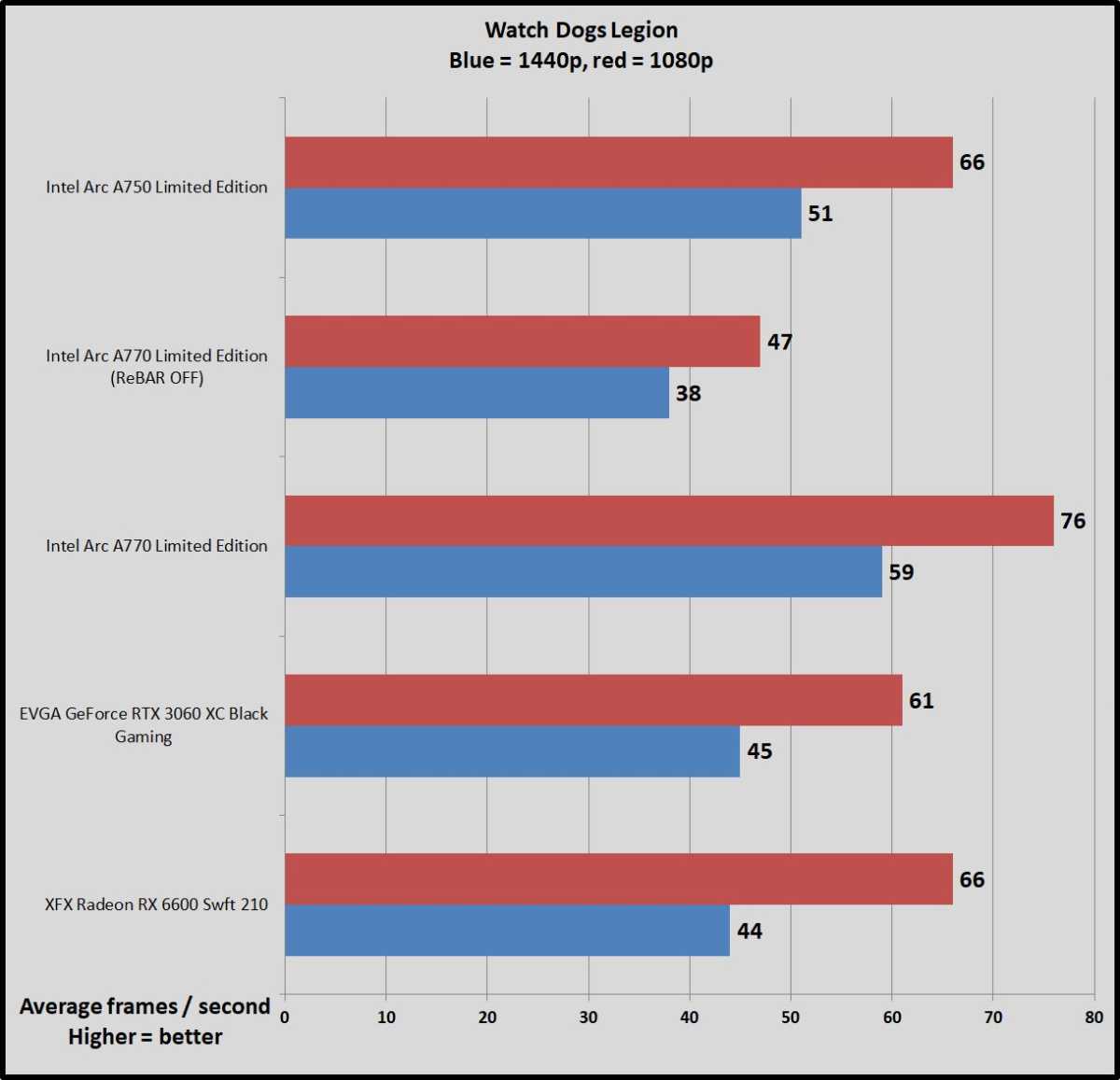
From PCWorld Intel Arc Review.
From PCWorld Intel Arc Review.
Brad Chacos
From PCWorld Intel Arc Review.
Brad Chacos
Brad Chacos
Moving on to Watch Dogs Legion, the A750 fares much better – matching the 6600 at 1080p and beating it by 7 FPS at 1440p. (Interestingly, Keith’s PCworld video found that A770 performance dropped slightly after the initial launch driver, so results can sway at times.)
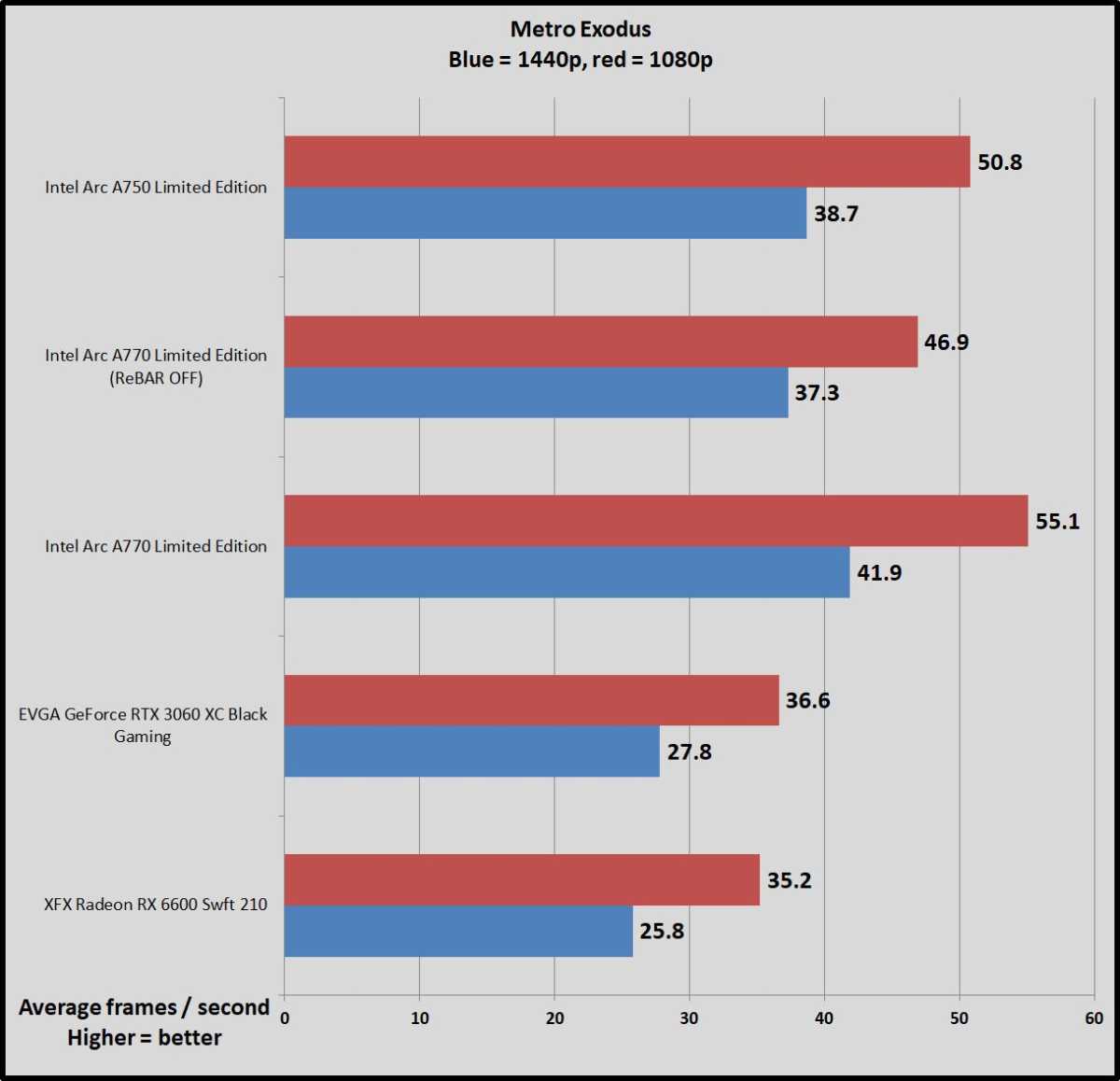
From PCWorld Intel Arc Review.
From PCWorld Intel Arc Review.
Brad Chacos
From PCWorld Intel Arc Review.
Brad Chacos
Brad Chacos
Metro Exodus is another title that shows the A750 with a pronounced lead over the AMD 6600, and Nvidia RTX 3060 too. It does this at both 1080p and 1440p, showing that often superior performance can be found on a game-by-game basis. If you’re considering performance on the A750, it might serve you well to check comparisons on the specific titles you plan to play.
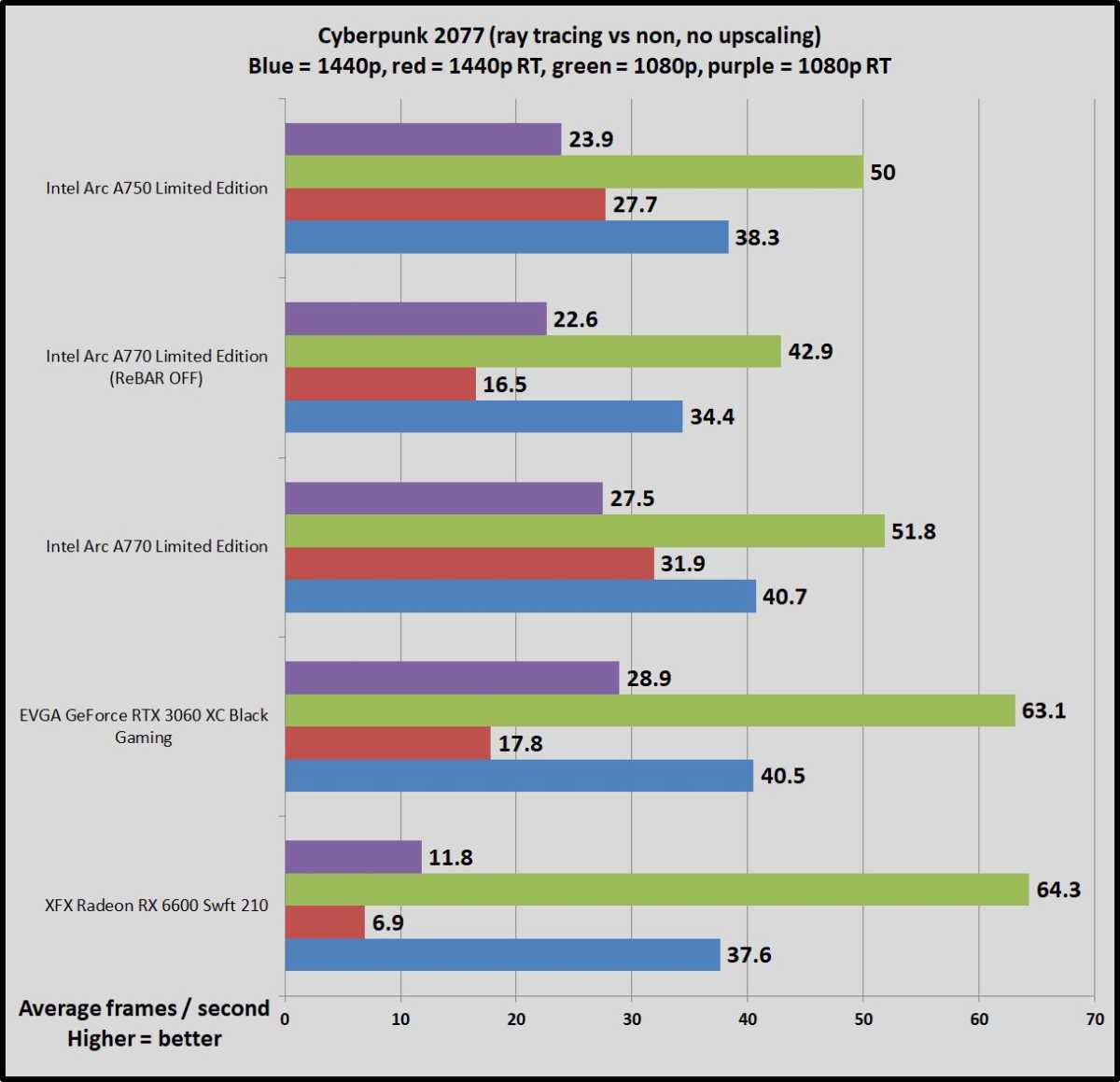
The A750 runs away with performance in ray tracing compared to the 6600 XT.
The A750 runs away with performance in ray tracing compared to the 6600 XT.
Thiago Trevisan
The A750 runs away with performance in ray tracing compared to the 6600 XT.
Thiago Trevisan
Thiago Trevisan
If we revisit Cyberpunk 2077 with ray tracing, we have some very interesting results. The A750 absolutely runs away with the performance here, being significantly better than the AMD 6600. It even manages to do comparatively well vs Nvidia, which isn’t too shabby – that’s Nvidia’s forte!
Of course, you’re not likely to want to run ray tracing at this GPU level. It has just too much of a performance penalty to be worth it. It’s interesting to see how it can be good on Intel Arc, however.
What if we take performance to a difference plane – and consider upscalers? Nvidia has DLSS, AMD has FSR, and Intel has XeSS. While Intel certainly has some good performance gains with XeSS, it’s still much newer than the competition and not as widely available.
While it can vary from game to game, AMD’s 6600 is overall the better performance GPU here in its entirety. If you account for its better availability, cheaper price, and more mature drivers, it will generally win out vs the A750. The A750 does outperform it in certain titles, however, which is certainly impressive. (And don’t even bring up ray tracing, the 6600 does not do very well!)
We’d still give this round over to the AMD 6600, it’s a much better overall bet for gamers who typically will seek out its 1080p performance.
Intel Arc A750 vs AMD RX 6600: Power and other things to know
Efficiency and power draw are important for keeping your temperatures under control. It’s also easier to budget cheaper components with lower power draw, too. Here the AMD 6600 runs away with the show – with significantly better numbers than the Intel Arc GPUs. Arc GPUs are know to be a bit more power hungry, so it’s no surprise – but this can have an effect on your system as a whole.
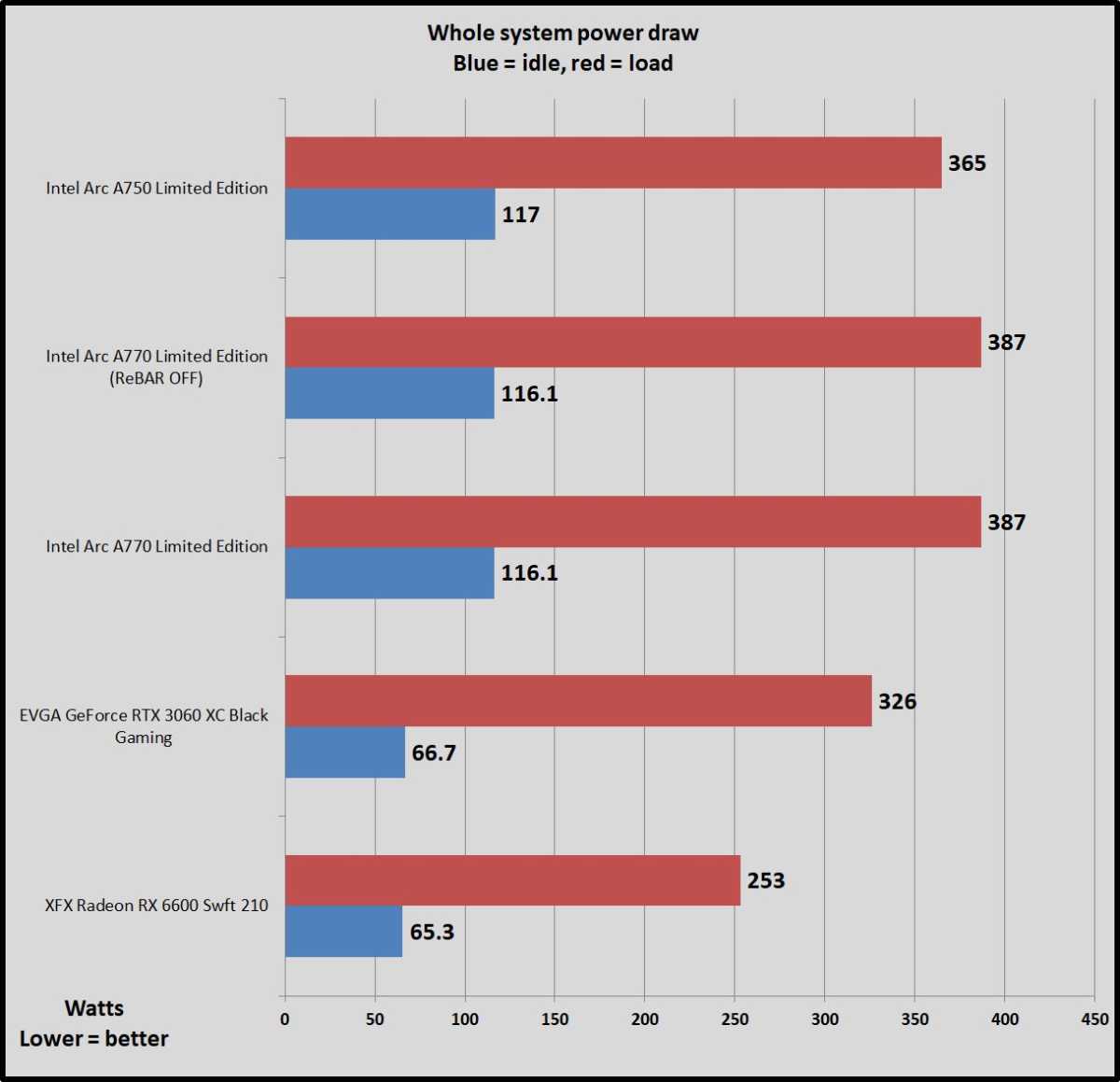
Whole system power draw for the Arc A750 and RX 6600.
Whole system power draw for the Arc A750 and RX 6600.
Brad Chacos
Whole system power draw for the Arc A750 and RX 6600.
Brad Chacos
Brad Chacos
Temperatures typically will be reasonable, but AMD 6600 do have a larger variety of cooler types available for case compatibility, too.
In terms of other items to know – Intel Arc Control has been improving, but you’re still potentially running into some issues with the software at times. AMD Adrenaline software is more stable overall, but it’s not perfect. Recently AMD took a little bit longer than usual to update RX 6000 GPU drivers compared to the newer RX 7000 GPUs, which left a few folks worried. Overall, their driver support is typically fine, however.
Intel Arc A750 vs AMD Radeon RX 6600: The Verdict
Radeon RX 6600 Swft 210
 Read our reviewPrice When Reviewed:$329.99Best Prices Today:$199.99 at Amazon | $229.99 at Newegg
Read our reviewPrice When Reviewed:$329.99Best Prices Today:$199.99 at Amazon | $229.99 at Newegg
The Intel Arc A750 is certainly an interesting addition to the GPU landscape. We hope that with continued support and driver updates, it can mature into a very stable platform. It also has some great performance chops when it wants to. Add ray tracing and XeSS to that and it’s all very exciting to see where it will go. Recent improvements for legacy games and DX9 have been promising.
That’s the key issue here, however—”where it will go.” The AMD Radeon RX 6600 is the clear winner here for most gamers, today. It’s much more widely available across various retailers, which in turn means that it is typically priced much more competitively.
The Radeon RX 6600 also competes very well against the Arc A750 across various metrics. It has stunningly good efficiency, putting out great performance and sipping less power. While the A750 can beat the 6600 in some cases, especially in DirectX 12 and ray-traced games, it’s more of a mixed bag. The overall consistent performance will favor the AMD GPU.
While ray tracing, and even 1440p performance are impressive, many gamers who are looking to spend $249 or less will likely want great 1080p performance first. This is where the AMD Radeon RX 6600 is typically more superior, making it a no-brainer.
Author: Thiago Trevisan
Recent stories by Thiago Trevisan:
DLSS 3 explained: How Nvidia’s AI-infused RTX tech turbocharges PC gamingNvidia GeForce RTX 4060 Ti vs. RTX 3060 Ti and Radeon RX 6700 XT: Fight!How to benchmark your graphics card







